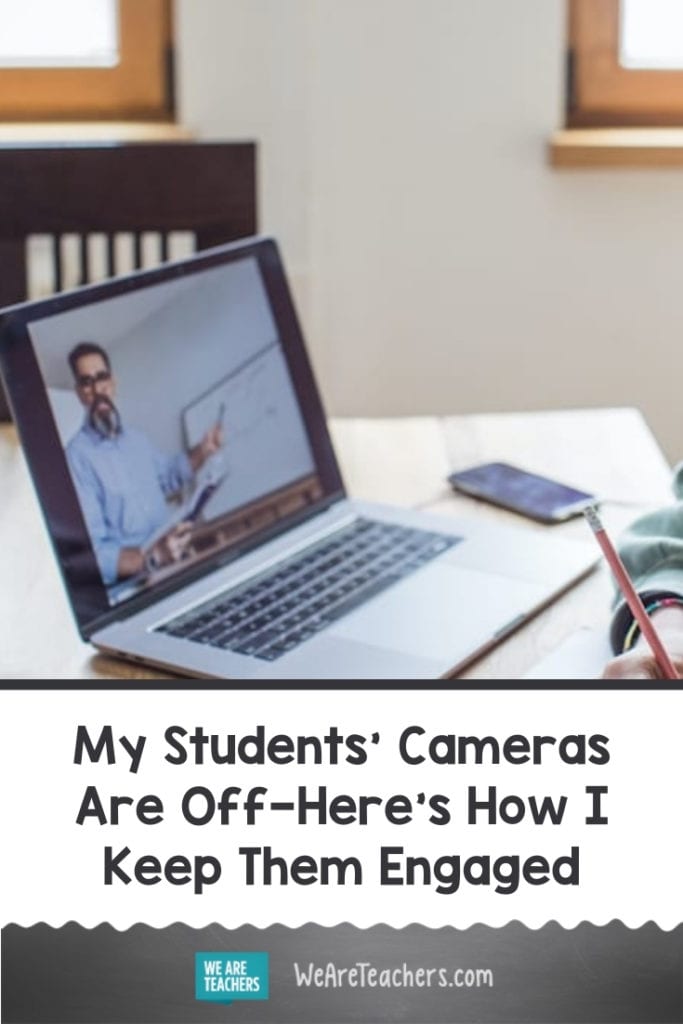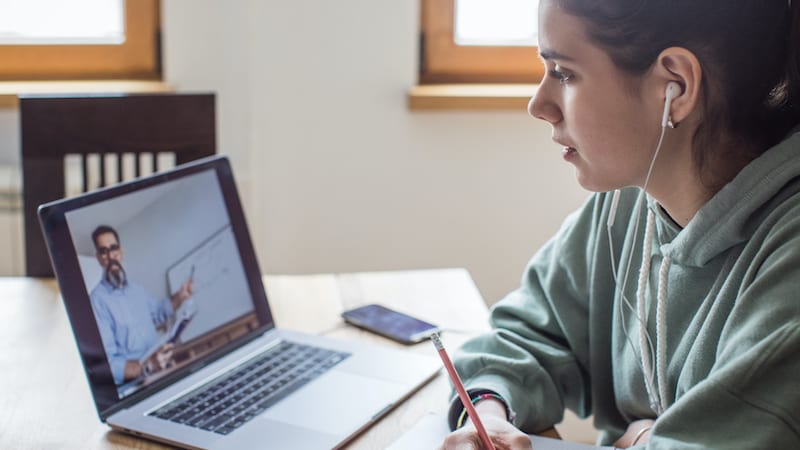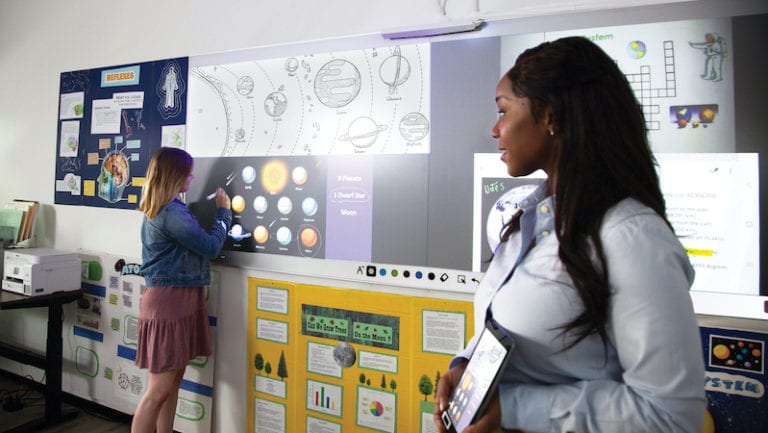When I log in to my virtual class, I’m multitasking to the 20th degree. I have 15 tabs open on two different browsers across two monitors. As students enter, I greet them and ask them to get their Chromebook ready for class by closing excess tabs and please mute themselves. I see cameras go on and off, hear background noises from 40 different houses, and mentally prepare myself for the next 70 minutes of instruction. Class begins, and I start with a breathing exercise and arm extensions. Most of my teacher team require that their students stay on camera. But, here’s where I deviate. I strongly urge my students to turn their cameras off. Here are my reasons for no camera usage and my strategies for online engagement.
My reasons for keeping cameras off
I choose to allow “cameras optional” 100% of the time. Why? I know many families are sharing bandwidth between multiple kids and parents working from home. 30% of my students experience terrible lag issues, and using a camera doubles their complications.
I also know that being “camera ready” means different things to different kids. I have evened the playing field by not requiring cameras. For some kids, all they have to do is roll out of bed while others style their hair and sometimes put on makeup. Now? Every student is represented by their avatar, and nobody has to stress about how they look.
Social-emotional awareness is also a consideration. I work in a Title 1 school district so the inside of some of these homes are not what many kids want their classmates to see. Online bullying is a real threat to our most vulnerable students, and I will not put any student in a position to potentially suffer abuse because of something out of their control.
[contextly_auto_sidebar]
My camera-off engagement strategies
Even though I can’t see their faces, I can still engage with my students.
- Gauging their mental state. I begin my class every day by saying, “Put a 1-5 in the chat for how you’re feeling today. 1 meaning not feeling well and 5 meaning it’s a great day!” If students feel comfortable sharing why they chose a particular number, I open the discussion up to allow them to elaborate on their state of being. One day, I forgot to ask this and a student wrote in the chat, “1-5, Mr. Willow.” I immediately got a flood of numbers and reasons for why they are feeling that way. I always welcome my students to engage in discussion about their daily lives. Right now, more than anything, students need to know that they belong to a community, and there is a supportive adult in their corner.
- Vulnerability. I try to be as direct, open, and honest in answering the questions my students ask. This immediately creates a trusting bond. By them seeing me being honest, it requires that they be honest with me. I have to model everything: how to send an email, how to access Canvas, how to input a subject in an email, title a Google doc. If I can teach them these tools, I can teach them how to be vulnerable as well.
- Utilize the chat. Muting and unmuting can be problematic as these kids listen to music, babysitting their crying sibling, or deal with a family feud that’s breaking out. Instead, I keep the chat function open and ask questions like, “Put a 1 if you agree and a 2 if you disagree.” If they abuse chat, I remind them that everything they write is recorded (Chrome has an extension for this). However, I rarely experience abuse of the chat because we have established a respectful bond right from the start of school.
Understand that we are all struggling. Whether your students are visual learners, need instructions repeated, or hate being at home; online classes are much harder than being in the classroom. As teachers, we have had to learn new technology and cope with teaching a quiet and faceless classroom. Everybody is doing the best they can in this new world. Give yourself and the kids some grace. Fighting with a student over their camera being off is not an efficient use of mine or the student’s time.
Do you require cameras on or allow for cameras off? Join other teachers to discuss in our WeAreTeachers HELPLINE Facebook group.
Plus, how to make the most of virtual office hours.


